#warm springs indian reservation
Explore tagged Tumblr posts
Text
This is a big deal. No, $48,692.05 is in no way, shape or form a fair price for the many thousands of acres of traditional Chinook land that were never ceded but were taken by settlers anyway. However, the fact that this funding from the 1970 Indian Claims Commission settlement is being released to the tribe is the strongest move toward regaining recognition in years.
As a bit of background, the Chinook Indian Nation are some of the descendants of many indigenous communities who have lived in the Columbia-Pacific region and along the Columbia to the modern-day Dalles since time immemorial. They saw the arrival of the Lewis & Clark party to the Pacific Ocean in 1805, but shortly thereafter were devastated by waves of diseases like malaria and smallpox. The survivors signed a treaty to give up most of their land in 1851, but it was never ratified by the United States government. While some Chinookan people are currently part of federally recognized tribes such as the Yakama Nation, the Confederated Tribes of the Warm Springs Reservation, and the Confederated Tribes of the Grand Ronde Reservation, the Chinook Indian Nation--comprised of the Lower Chinook, Clatsop, Cathlamet, Willapa, and Wahkiakum--have remained largely unrecognized.
That changed briefly in 2001. On January 3 of that year, the Department of the Interior under the Clinton administration formally recognized the Chinook Indian Nation. In July 2002, the Bush administration revoked the federal recognition after complaints from the Quinault Indian Nation, as the Chinook would have had access to certain areas of what is now the Quinault reservation. This meant that the Chinook, once again, were denied funding and other resources given to federally recognized tribes, to include crucial healthcare funding during the COVID-19 pandemic.
The Chinook Indian Nation has been fighting legal battles to regain federal recognition ever since the revocation. The funding released to them in this month's court decision doesn't make them federally recognized, but it is a show of legitimacy in a tangled, opaque system that indigenous people across the United States have had to contend with for many decades. Here's hoping this is a crack in the wall keeping the Chinook from recognition, and that they get more good news soon.
#Chinook Indian Nation#Chinook#Chinookan people#indigenous people#indigenous Americans#indigenous rights#landback#federal recognition#Bureau of Indian Affairs#Native American#Native American rights#civil rights#United States
332 notes
·
View notes
Text
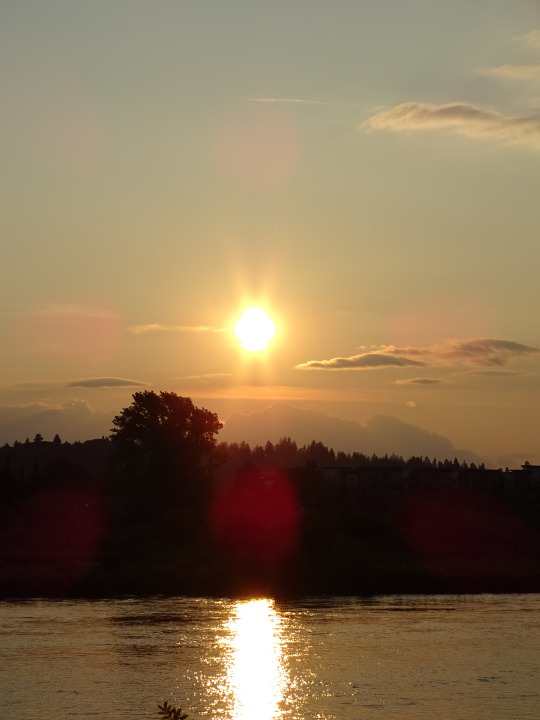


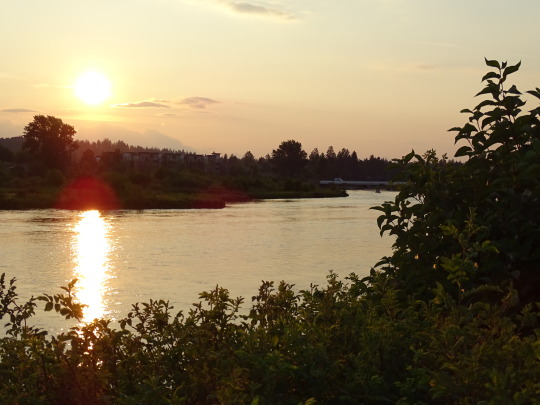
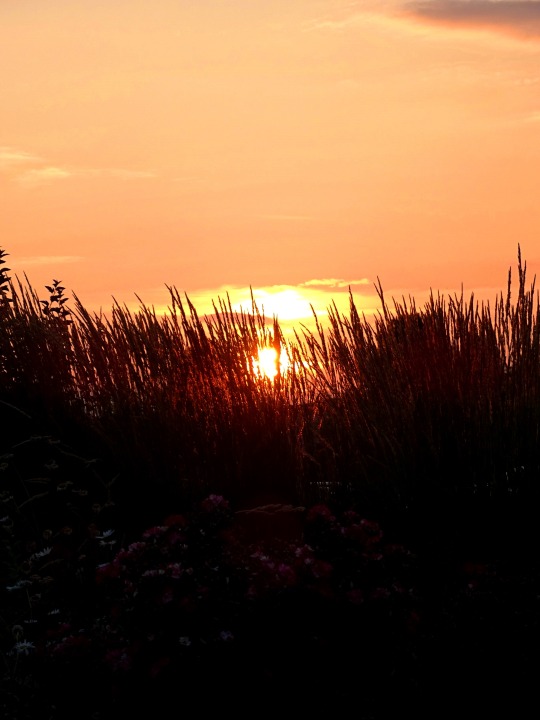

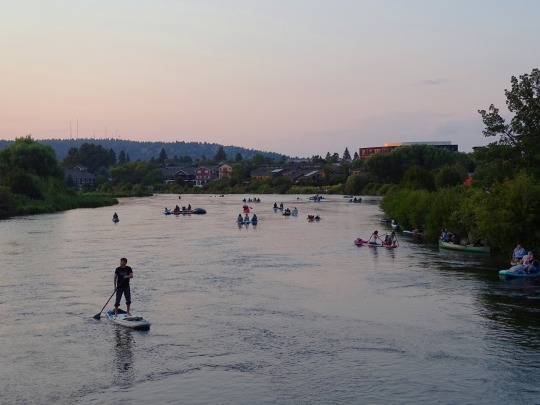
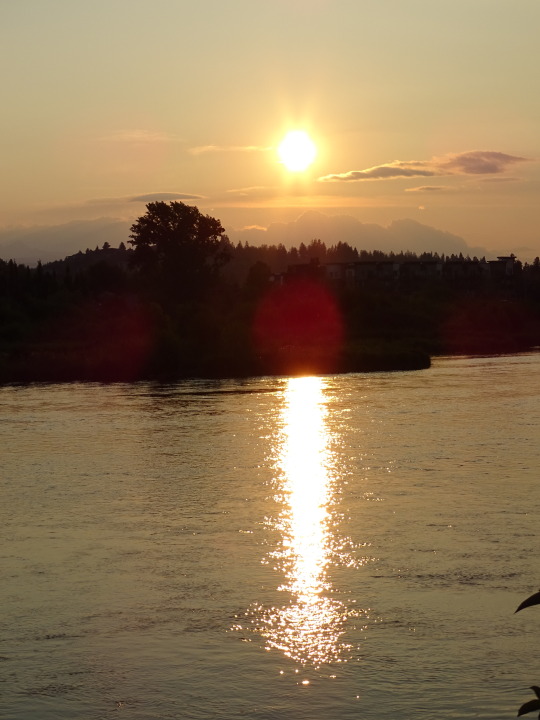
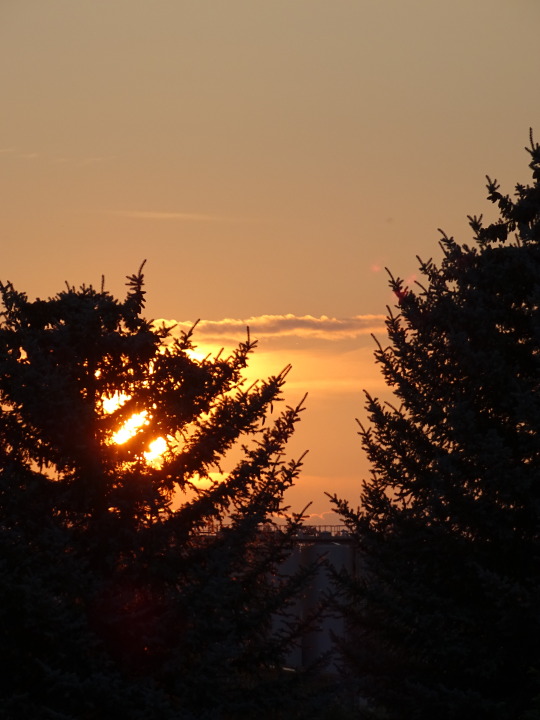

Bend, OR (No. 8)
The headwaters of the Deschutes River are at Little Lava Lake, a natural lake in the Cascade Range approximately 26 miles (42 km) northwest of the city of La Pine. The river flows south into Crane Prairie Reservoir, then into Wickiup Reservoir, from where it heads in a northeasterly direction past the resort community of Sunriver and into the city of Bend, about 170 miles (270 km) from the river mouth on the Columbia.
In central Bend, the river enters Mirror Pond, an impoundment behind Newport hydroelectric dam. The pond extends upstream to the Galveston Bridge and is a feature of Drake Park as well as Harmon, Pageant, and Brooks parks. From April through October, diversions to Central Oregon Irrigation District canals reduce the river flow between Bend and Pelton Reregulating Dam, at river mile (RM) 100 (river kilometer (RK) 160).
The river continues north from Bend, and just west of Redmond, Oregon. Here it passes by Eagle Crest Resort and Cline Falls State Scenic Viewpoint. As it heads north through the central Oregon high desert, the river carves a gorge bordered by large basalt cliffs. By the time it reaches Lake Billy Chinook, a reservoir west of Madras, the river is approximately 300 feet (91 m) below the surrounding plateau, the Little Agency Plains and Agency Plains. At Lake Billy Chinook the river is joined by the Crooked and Metolius rivers.
Beyond the dam, the river continues north in a gorge well below the surrounding countryside. It passes through the Warm Springs Indian Reservation, which includes the city of Warm Springs and the Kah-Nee-Ta resort. The river ends at its confluence with the Columbia River, 5 miles (8 km) southwest of Biggs Junction and 204 miles (328 km) from the Columbia's mouth on the Pacific Ocean.
Source: Wikipedia
#Bend#flags#Central Oregon#Deschutes County#Oregon#USA#summer 2023#Pacific Northwest#travel#original photography#vacation#tourist attraction#landscape#landmark#cityscape#architecture#Old Mill District#evening light#tree#flora#sunset#reflection
14 notes
·
View notes
Text

Native American Outdoors Family Walla Walla 1900s 1902
Indian Joe Family. Native American men, women, and children standing in front of shelter, Warm Springs Reservation, Oregon - 1902
7 notes
·
View notes
Text









i didn't take a TON of photos today because i was enjoying time with my family, but !! here's some kinda nature moodboard with my fave pics from today's adventure. we went out to the bridge of the gods over the columbia river gorge, then drove south to a mount hood ski lodge with about a dozen feet of snow 7700 ft in the air, then drove east into the high desert of the warm springs indian reservation! it's wild that this loop took less than 7 hours not counting stops for lunch and gas and bathroom breaks. i love it here.
#oregon#travels#my photography#cannot recommend this loop enough if you like driving and have a day to kill in the portland area
14 notes
·
View notes
Text
Kebab aur Sharab, NYC
I don’t make New Year’s Resolutions, but I do try and set a few goals for myself at the top of each year, like regularly updating this blog in 2023. Another is something I’m calling “CBTPB”, or “C.B’s Trains, Planes and Boats”, which is to make a weekly excursion to a restaurant I’ve never been to before that I’ll get to by one of the listed forms of transportation. And I’m kicking things off this week with my visit to the new Kebab aur Sharab on Manhattan’s Upper West Side, which I got to on the subway, more specifically, the 1 train.
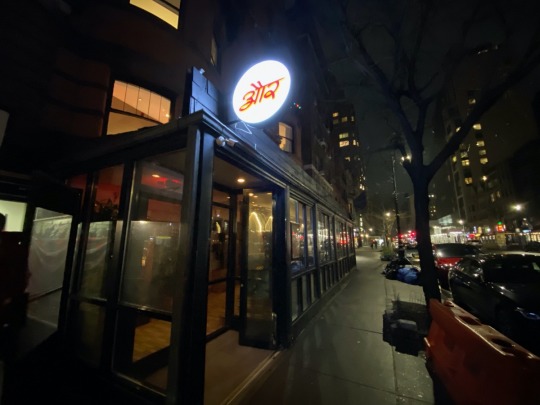
Kebab aur Sharab is the newest restaurant from Chef Salil Mehta of Laut/Singapura/Wau fame who’s partnered with Chef Dipesh Shinde, cooking for the first time in New York City after years of running the kitchens in some New Delhi’s finest restaurants. I was kindly invited to the friends & family tasting last week and was truly impressed with every dish that hit our table. While I did have a few favorites, the first three dishes you’ll see below, their entire menu is worth exploring! Here’s a look...
Andhra Chilli Chicken

“Famous” Butter Chicken


Muradabadi Dal Lentil Soup
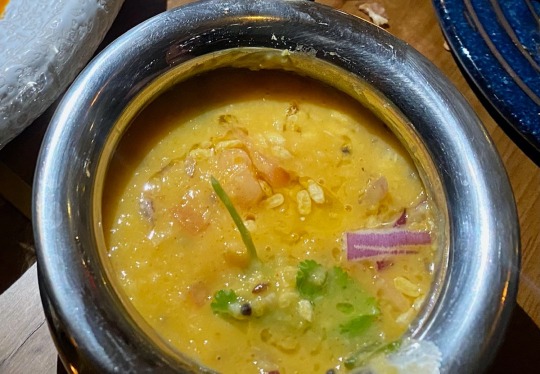
Grilled River Prawns with Mango Chutney

Purple Yam Chaat
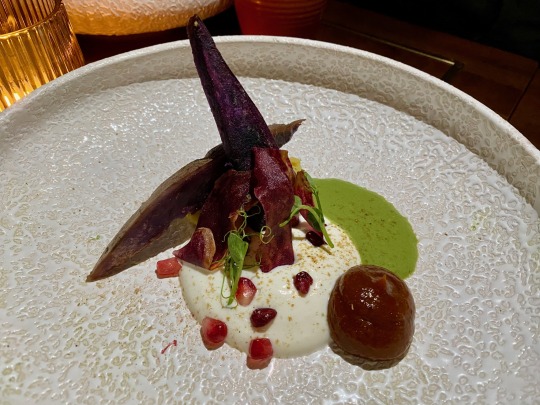
Kashmiri Tandoor Chicken with Kachumber
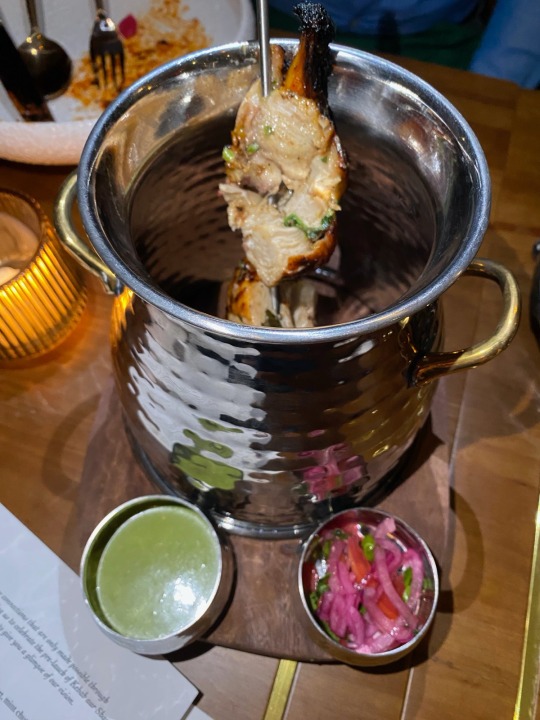

Baby Goat Dori Kebab
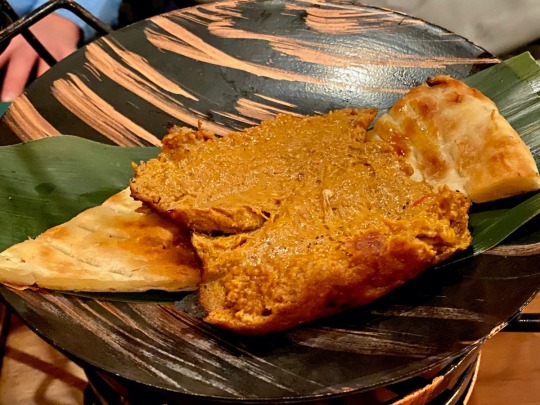
Nawabi Paneer Cheese Kebab


Palak Paneer Spinach with Mirch Rogan

Kerala King Fish Curry

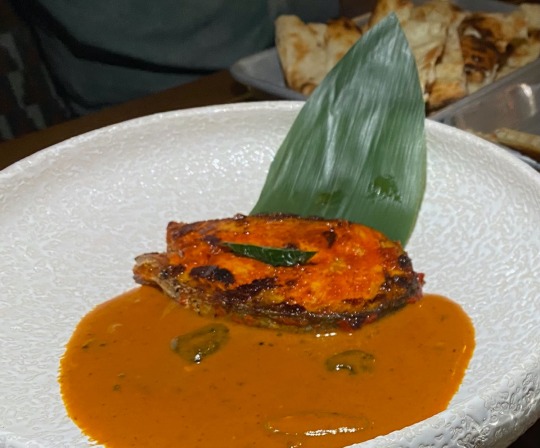
Chicken Biryani
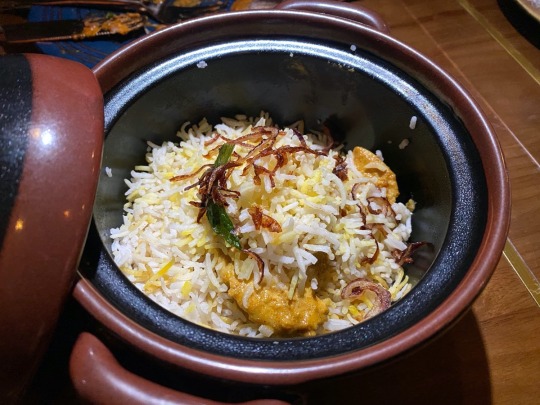
All this served with assorted naan, roti and paratha, no less!
There’s a noted venison dish that was unavailable the night we were there that we’ll be going back for soon.

Renowned bartender Colin Stevens, of Singlish and Jelas, is building the cocktail menu and I recommend starting with his Paan Shop, made with gin, fennel and betel nut. The spice pack is an edible bite...

There’s also a curated wine list for pairing with Indian food and punches are coming soon.
A quick look at the cozy interior, as well as the outside atrium, that will be wonderful come spring and the warm weather when they can open the windows up...
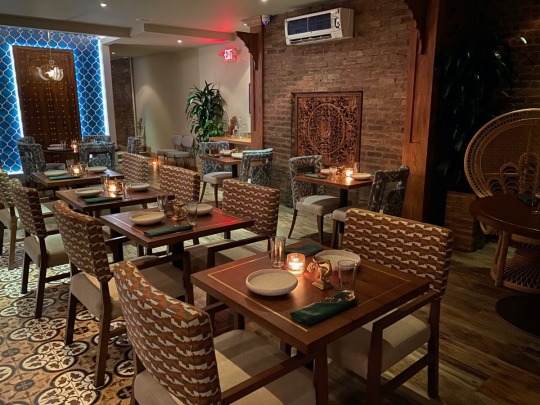

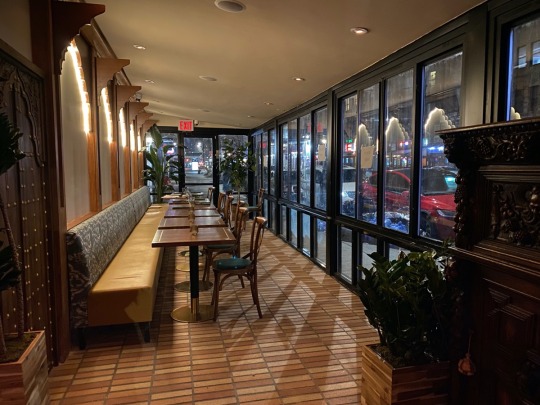
Kebab aur Sharab is open on West 72nd St. and for now, be sure to look for the logo in my first pic up top there as the name of restaurant is not up yet. Enjoy!
(And thanks to Aik Wye Ng and Mutsumi Masuda for assistance with some pics I missed.)
KEBAB AUR SHARAB
247 West 72nd St.
NY, NY 10023
212-540-5247
Reservations available through resy.com
#CBTPB#new york#new york city#nyc#big apple#restaurant#indian food#indian#new delhi#kebab grills#curry#tandoori#chicken#biryani#food#foodie#chutney#cocktails#bar#chilli#spicy#spicy food#fish#prawns
16 notes
·
View notes
Text
Ok, so my brother and I had a little thought experiment about Iran and how it could have turned out as a country if the Western powers didn't interfere with their government.
Granted, we are not experts and only have a decent knowledge of this part of history, but here's what we came up with:
Opt 1: possible left-leaning government with ties to Soviet Russia. There was a communist minority in Iran, but they never would have committed to full atheist communism. Faith was/is so ingrained to most Arab cultures that it's like breathing, and trying to get rid of it would require far too much violence.
Even though the Soviets wouldn't be too happy about that, they may have tolerated it enough just to have an ally with so much oil and (ding ding ding) access to warm water ports. As a result, they never would have tried to invade Afghanistan (which was part of their efforts in trying to access the Indian Ocean). With Iran as an ally, they might have attempted to connect them via their railway system. This would have been a massive project and would’ve required an incredible amount of manpower and engineering just to pass rail either through Georgia or Azerbaijan, and this is assuming they don't try to blast tunnels through the mountains there.
And when the Soviet Union fell (their version of socialism/communism was unsustainable, even without the drain of a prolinged war in Afganistan and a million failing projects), there may have been a lot of refugees fleeing into Iran.
Also, if the USSR had built railways down the western side of Iran, there's a good chance Sadam Hussain would have invaded to try and get his bloody hands on them. Bear in mind that he only invaded irl because he thought Iran was weak after the Arab Spring uprising.
Opt 2: A Democratic Iran. This would have been a bit of a conundrum for the American people. For one, Islamophobia was on the rise, but to have a theocratic democracy in the Middle East... I think a lot of Cold War Era Americans wouldn't know what to think about that and be divided as a result.
Again, religion is baked into every part of life for most Arab states. It's only been an issue once extremists got in charge.
Either way, the Western governments would have been more than happy to have an ally in the Middle East since that is really all they've wanted this whole time. This may have led to much less support for the colonization of Palestine, and therefore either a much weaker or much meeker state of Israel, if not it's outright failure (yay!). Of course, that opens the discussion to a lot of other topics, but we'll leave it there for now.
Opt 3: a theocracy (run by moderates).
This one is a little more difficult to debate, if only because my brother and I are unfamiliar with the Muslim faith and how it is ecclesiastical authorities are organized.
Still, a purely Muslim-run state with less-extremists in leadership would have been a valuable ally to both the USSR and USA, especially since Iran was the 4th most powerful country at the time - what with their with their deep oil reserves and more modern military.
And how that could have played out is anyone's guess.
Ok those are my thoughts, I hope you enjoyed them.
Again, this is purely speculation from two men who have rather a basic understanding of Iran and its recent history and should not be taken as fact or a deeply held opinion.

This is what it feels like when someone infodumps to me. By the way
19K notes
·
View notes
Text
Seasonal Mauritius: Unique Experiences by Month and Weather
Mauritius is a tropical paradise that offers year-round beauty, but the island's experiences vary with its seasons. If you're planning a trip, understanding Mauritius's weather and seasonal highlights can help you make the most of your visit. Here's a month-by-month guide to exploring the island, along with tips on getting around conveniently with car rentals.
January to March: Summer Bliss and Festive Vibes
Weather: The peak summer months, with temperatures ranging from 25°C to 33°C. Expect high humidity and occasional tropical showers, which are usually short-lived.
What to Do:
Beach Days: Perfect time to enjoy the warm waters of the Indian Ocean. Head to Le Morne or Flic en Flac for swimming and water sports.
Underwater Adventures: Summer is ideal for snorkeling and diving, as the visibility is excellent. Coral reefs near Blue Bay Marine Park are teeming with marine life.
Chinese New Year: Celebrate this cultural festival in Chinatown, Port Louis, with food, performances, and fireworks.
Travel Tip: Roads can be slippery during sudden rains. Renting a car with good tires is essential to safely explore places like Black River Gorges or Chamarel during this time.
April to June: The Cool Transition
Weather: Temperatures drop slightly (22°C to 28°C). The humidity decreases, making it one of the most comfortable times to visit.
What to Do:
Hiking and Nature: Cooler weather is perfect for hikes. Explore the lush forests of Black River Gorges National Park or trek to the summit of Le Pouce Mountain for panoramic views.
Cultural Exploration: Visit the quieter villages like Mahebourg and experience their relaxed charm.
Low-Season Perks: Fewer tourists mean better rates on accommodations and car rentals.
Travel Tip: With fewer crowds, driving is more enjoyable. Rent a car to explore quieter areas like Pointe d'Esny or Rochester Falls at your own pace.
July to September: Winter Serenity and Festivals
Weather: The coolest months, with temperatures ranging from 17°C to 25°C. While it’s winter, Mauritius still feels warm compared to many countries.
What to Do:
Kite Surfing: The strong trade winds make it the best time for kite surfers. Le Morne is a hotspot for this thrilling activity.
Whale Watching: Head to the southwest coast to spot humpback whales during their migration.
Ganesh Chaturthi: Celebrate this vibrant Hindu festival with locals. Temples and streets come alive with processions and offerings.
Travel Tip: The cooler weather is ideal for long drives along the coastal roads. Renting a car ensures you can easily visit windy spots like Gris Gris or hidden gems like La Cambuse Beach.
October to December: Spring Rejuvenation and Festive Beginnings
Weather: Temperatures rise again (24°C to 30°C). The dry season transitions into summer, with clear skies and blooming flora.
What to Do:
Beach Bliss: October is one of the driest months, perfect for sunbathing and swimming.
Dolphin Watching: November is a great time to join tours and see dolphins up close in Tamarin Bay.
Christmas Celebrations: Mauritius gets into the festive spirit in December. Join the lively celebrations and enjoy shopping in Port Louis or Grand Baie.
Travel Tip: The roads are busier in December due to holiday traffic. Book your car rental early to ensure availability and enjoy exploring at your own convenience.
Why Renting a Car is Essential in Mauritius
Mauritius’s public transportation is limited and often crowded. Renting a car allows you to explore the island at your own pace, especially when visiting less accessible spots like hidden beaches, waterfalls, or nature reserves. With affordable rates and easy-to-navigate roads, a car gives you freedom and flexibility, whether you're driving through bustling towns or tranquil countryside.
Conclusion
No matter the month, Mauritius has something unique to offer. From the warm summer beaches to the windy winter adventures, each season unveils a different side of the island. Pair your travel plans with a car rental to ensure a seamless and stress-free experience, allowing you to explore Mauritius in all its seasonal glory.
1 note
·
View note
Text
Everything You Need to Know Before You Book Mombasa Tour Packages

If you’re dreaming of an adventure that combines stunning coastlines, breathtaking wildlife, and a rich cultural experience, Mombasa is the place to be. As Kenya’s largest coastal city, Mombasa serves as a gateway to some of the most spectacular safaris, pristine beaches, and vibrant local culture. Before you book your Mombasa tour package, here’s everything you need to know to make the most of your trip.
1. Why Choose Mombasa for Your Safari and Beach Holidays?
Mombasa is a unique travel destination offering the perfect blend of safari adventure and beach relaxation. Mombasa Safari Tour Packages allow travelers to immerse themselves in the wild, experiencing thrilling encounters with Africa’s Big Five and numerous other animals across renowned game reserves like Tsavo East, Tsavo West, and Shimba Hills. The accessibility to these parks makes Mombasa an ideal base for those looking to blend a beach vacation with an authentic safari experience.
For those seeking more than wildlife, Mombasa is bordered by beautiful beaches like Diani, Nyali, and Watamu. These coastal gems provide opportunities for water activities such as snorkeling, scuba diving, and deep-sea fishing, along with a relaxing beachside experience. Opting for a Mombasa Safari and Beach Holidays Package gives you a balanced itinerary with the best of both worlds — wildlife adventure and beachside bliss.
2. Types of Mombasa Safari and Beach Packages
There are various types of tour packages available in Mombasa, each tailored to different interests and budgets:
Luxury Safari and Beach Packages: Ideal for those seeking premium services and accommodations, these packages often include private game drives, luxurious beach resorts, and exclusive experiences like guided nature walks and hot-air balloon rides.
Budget-Friendly Safari Packages: These are perfect for travelers who want to experience Mombasa’s wildlife and beaches without breaking the bank. Many affordable packages provide comfortable accommodation, group safaris, and essential services while ensuring a fantastic adventure.
Family Safari and Beach Packages: Tailored for families, these packages include child-friendly activities, family-sized accommodations, and guided tours that cater to all ages. From educational animal encounters to fun beach activities, these packages ensure a memorable experience for the whole family.
Customized Mombasa Tour Packages: If you have specific interests, many tour providers offer custom packages that allow you to design your itinerary. This flexibility lets you choose exactly how much time to spend on safari versus beach activities, as well as the destinations you wish to include.
3. The Best Time to Book Mombasa Tour Packages
Knowing when to book your Mombasa Tour Packages can make a big difference in your travel experience. Mombasa enjoys warm weather year-round, but the best times for safaris and beach visits are typically from June to October and January to February. These dry seasons offer the best wildlife viewing opportunities, as animals gather around water sources, making them easier to spot.

4. Top Destinations in Mombasa Safari and Beach Packages
When booking a Mombasa Safari and Beach Holidays Package, you’ll often have the option to visit some of the region’s top destinations:
Tsavo East National Park: Known for its red-colored elephants, Tsavo East is one of Kenya’s largest and most famous parks, offering stunning views, expansive landscapes, and thrilling game drives.
Tsavo West National Park: Tsavo West is known for its dramatic landscapes, with rugged terrain, Mzima Springs, and volcanic rocks, as well as a diverse range of wildlife including lions, leopards, and rhinoceros.
Shimba Hills National Reserve: Just a short drive from Mombasa, Shimba Hills offers lush rainforests and is home to the endangered sable antelope, along with breathtaking views of the Indian Ocean.
Diani Beach: One of Africa’s most stunning beaches, Diani Beach offers miles of white sand, palm trees, and clear blue waters. It’s a popular spot for relaxation as well as water sports like kitesurfing, snorkeling, and diving.
5. What to Consider When Booking a Mombasa Tour Package
Before you Book Mombasa Tour Packages, it’s essential to review what’s included in each package. Some packages cover accommodations, meals, game drives, and entry fees to parks, while others may offer additional perks like airport transfers, private guides, or cultural tours. Be sure to check if the package aligns with your expectations and budget.
Additionally, consider the reputation of the tour provider. Look for reviews and testimonials from past travelers, as a reputable provider ensures a smooth, enjoyable experience. Many packages include English-speaking guides with in-depth knowledge of the local wildlife and culture, adding educational value to your safari and beach holiday.
6. Getting Around Mombasa and Nearby Areas
Mombasa has several options for transportation, including taxis, shuttles, and car rentals. Some safari packages also offer transportation services, making it easier to move between Mombasa and nearby areas. Cities and towns near Mombasa, like Malindi, Watamu, and Kilifi, are worth exploring, and some packages include visits to these destinations for a complete coastal experience.
Booking a Mombasa tour package is your ticket to experiencing the magic of Kenya’s coastline and wild landscapes. Whether you’re looking for thrilling safari adventures or serene beach relaxation, Mombasa offers something for every type of traveler. For a seamless experience, be sure to choose a trusted provider who can guide you through every step of your journey.
For more information or to book your ideal safari and beach holiday in Mombasa, reach out to Curliss Tour Safaris:
Phone: 254 102 036646
Email: [email protected]
With a package from Curliss Tour Safaris, you’re set for an unforgettable adventure in Mombasa and nearby areas such as Malindi, Watamu, and Kilifi, where the beauty of Kenya awaits you.
#MombasaTourPackages#MombasaTravel#TravelToMombasa#ExploreMombasa#MombasaVacation#KenyaTours#BeachGetaway#TravelTips
0 notes
Text
Best Time to Visit Hotel Hilltop Gulmarg

Gulmarg, a stunning hill station in the Indian state of Jammu and Kashmir, is renowned for its breathtaking landscapes and the luxurious Hotel Hilltop Gulmarg. To make the most of your stay at this exquisite hotel, it's essential to choose the right time to visit. Here’s a detailed guide on the best times to experience the beauty and charm of Gulmarg.
Spring (March to May)
Highlights:
Blooming Flowers: The meadows around Hotel Hilltop come alive with a riot of colors as flowers bloom during spring.
Pleasant Weather: Temperatures range from 13°C to 29°C, making it ideal for outdoor activities like sightseeing, golfing, and picnics.
Snow Residue: Early spring still has some snow, offering a unique blend of winter and spring landscapes.
Activities:
Stroll through the blooming meadows.
Enjoy golfing at the Gulmarg Golf Course.
Visit the famous Gulmarg Biosphere Reserve.
Summer (June to August)
Highlights:
Mild and Pleasant Climate: With temperatures between 20°C to 25°C, summer is perfect for exploring the area comfortably.
Adventure Sports: This is the best time for trekking, mountain biking, and gondola rides.
Lush Greenery: The valley is lush and green, offering spectacular views.
Activities:
Take a ride on the Gulmarg Gondola, one of the highest cable cars in the world.
Trek to the nearby Alpather Lake.
Participate in summer festivals and local events.
Autumn (September to November)
Highlights:
Golden Landscapes: The foliage turns golden, offering picturesque views ideal for photography.
Cool Weather: Temperatures range from 13°C to 23°C, making it comfortable for sightseeing and outdoor activities.
Harvest Season: Enjoy local festivals and the harvest season's bounty.
Activities:
Capture the stunning autumn landscapes.
Explore local culture and participate in harvest festivals.
Visit nearby attractions like the Tangmarg and Drung villages.
Winter (December to February)
Highlights:
Snow Wonderland: Gulmarg transforms into a winter wonderland, attracting snow lovers from around the world.
Skiing and Snowboarding: Known as the premier skiing destination in India, winter sports enthusiasts flock here.
Festive Atmosphere: The holiday season brings a festive vibe, with Christmas and New Year celebrations.
Activities:
Skiing and snowboarding on the pristine slopes.
Sledging and snowshoeing.
Enjoy the cozy ambiance of Hotel Hilltop with its warm hospitality and breathtaking winter views.
Conclusion
Each season offers a unique charm and set of activities, making Gulmarg a year-round destination. However, the best time to visit Hotel Hilltop Gulmarg largely depends on your interests:
For Blooming Meadows and Pleasant Weather: Visit in Spring (March to May).
For Mild Climate and Adventure Sports: Visit in Summer (June to August).
For Golden Landscapes and Cool Weather: Visit in Autumn (September to November).
For Snow Sports and Winter Wonderland: Visit in Winter (December to February).
Choose the season that aligns with your interests and preferences to enjoy a memorable stay at Hotel Hilltop Gulmarg.
#HotelHilltopGulmarg#itineraryplans;#tours ;#Travel#itineraryblog ;#travelblog ;#travelguide#tourplan#travelplan#tourguide#travelguide;#Indiahotel#indiatravel#maharashtra#indiatour
0 notes
Text
Into the Depths: A Journey Through Grand Canyon's Natural Splendor

Grand Canyon National Park stands as a testament to the Earth's enduring beauty and geological marvels. With its awe-inspiring vistas, breathtaking hikes, and rich cultural history, it's a destination that captivates the hearts and minds of millions of visitors each year. Situated in the northwestern part of Arizona, the park offers not only the grandeur of the canyon itself but also an array of activities and sights to explore.
Places to Explore:
South Rim: The South Rim is the most accessible and popular area of the park, offering numerous viewpoints such as Mather Point and Yavapai Observation Station. Visitors can also explore the historic Grand Canyon Village, home to iconic structures like the El Tovar Hotel and the Hopi House.

North Rim: The North Rim provides a more secluded experience with fewer crowds and a cooler climate due to its higher elevation. Here, visitors can enjoy stunning vistas from spots like Bright Angel Point and Cape Royal. The North Rim also offers various hiking trails, including the renowned North Kaibab Trail.
Havasu Falls: For those seeking adventure and natural beauty, a trip to Havasu Falls is a must. Located within the Havasupai Indian Reservation, this series of cascading turquoise waterfalls is accessed via a challenging hike, but the reward is well worth the effort.
Desert View: Desert View is not only a scenic overlook but also home to the historic Desert View Watchtower, offering panoramic views of the canyon and the Colorado River. It's an ideal spot for sunrise or sunset photography.

Grand Canyon Skywalk: For a unique perspective, visitors can experience the Grand Canyon Skywalk, a glass bridge extending over the canyon's edge. This engineering marvel provides thrilling views and photo opportunities.
Tusayan, Closest town to the Grand Canyon:
The nearest town to Grand Canyon National Park is Tusayan, located just south of the South Rim entrance. Despite its small size, Tusayan offers a range of amenities, including lodging, restaurants, and souvenir shops, making it a convenient base for exploring the park. Tusayan experiences a diverse climate throughout the year. Summers bring warm temperatures, often reaching over 90°F (32°C), perfect for exploring the park's wonders. Fall and spring offer milder weather, ideal for outdoor activities and sightseeing. Winters can be chilly, with temperatures occasionally dropping below freezing, especially at night. Whether you're planning a summer hike or a winter retreat, Tusayan's climate adds to the allure of your Grand Canyon adventure.
The weather at Grand Canyon National Park varies significantly depending on the season and elevation. Summers are typically hot at the canyon bottom, with temperatures often exceeding 100°F (38°C), while the higher elevations of the North Rim experience milder temperatures. Winters can bring cold temperatures and occasional snowfall, particularly at higher elevations. Spring and fall offer pleasant weather, making them ideal times to visit, with mild temperatures and smaller crowds.

Final Thoughts:
Grand Canyon National Park is a place of unparalleled natural beauty and wonder, where visitors can immerse themselves in the grandeur of one of the world's most iconic landscapes. Whether you're marveling at the vastness of the canyon from its rim, hiking into its depths, or exploring its cultural history, a visit to the Grand Canyon is sure to be an unforgettable experience. Plan your trip carefully, considering the best times to visit and the array of activities available, and prepare to be awestruck by the magnificence of this natural wonder.
1 note
·
View note
Text
Missouri State Parks
Prairie State Park
Wildflowers and Wide Open Spaces
Imagine following a great river of bison across a treeless expanse of sun-washed grasses or witnessing the spectacle of a prairie wildfire lighting the night sky. This blend of grazing and fire was among the many factors that contributed to an intricate assembly of tallgrasses, wildflowers and abundant wildlife called prairie.
More than 13 million acres of tallgrass prairie once covered more than one-third of Missouri’s landscape. Today, less than 65,000 acres remain. Prairie State Park is Missouri’s largest remaining tallgrass prairie landscape. Four examples of tallgrass prairie within the park, East Drywood Creek, Regal, Hunkah and Tzi-sho prairies, were originally designated as natural areas. These have all now been combined and are included in the nearly parkwide Regal Tallgrass Prairie Natural Area designation. Purchased with the help of The Nature Conservancy, Prairie State Park preserves a unique and rare diversity of life.
That diversity is represented in more than 150 birds, 25 mammals, 25 reptiles, 12 amphibians and approximately 500 species of plants, 350 being native prairie species. The conversion of the once-vast prairie to farmland, towns and roads has left few natural places as refuges for the plants and animals distinctive to a tallgrass prairie ecosystem. More than 25 rare and endangered plant and animal species have been recorded in Prairie State Park, some of which are not found anywhere else in the state. A reintroduced bison herd freely grazes across the landscape, shaping the earth with grazed patches, trails and wallows.
To preserve this heritage, park staff conduct research, monitoring practices and stewardship procedures. Prescribed fires remove accumulated grass mats and increase soil nutrients. The open character of the prairie is protected with the removal of invading trees. Bison have been reintroduced to join other native grazers to maintain the natural grazing processes. Where the prairie vegetation no longer exists, native plants are sown.
Each season of the year transforms the prairie. Spring is a sea of green grasses sprinkled with red, purple and cream-colored blossoms of Indian paintbrush, arrow-leaved violet and cream wild indigo. Pumpkin-colored bison calves are born in May and June. Summer brings a constant succession of flowers from pale purple coneflower to rattlesnake master, gayfeather and butterfly milkweed. Regal fritillary butterflies float from flower to flower in search of nectar, while slender glass lizards bask in the warm sunlight. Dickcissels, sedge wrens and Henslow’s sparrows nest among the plants.
As temperatures rise, warm-season grasses such as big bluestem and Indian grass can grow to 8 feet tall. In autumn, the purple spikes of rough blazing star and several types of goldenrod and asters compete for attention, while downy gentian is nestled low amongst the tall grasses. During the winter months, Northern harriers, prairie falcons and rough-legged hawks may be spotted as they soar through the sky. Frost and snow frequently decorate the landscape to create silvery lights on golden grasses.
During any season, visitors can experience prairie life by hiking one of the park’s trails. Visitors can take a short hike or reserve the park’s backpacking camp and sleep under the vast prairie sky. With more than 150 bird species, some of which are rare and endangered, bird-watching is a favorite activity. The trails also provide a great place for nature study, photography, and viewing wildflowers and wildlife. The park also has a picnic area and limited camping. Potable water is available on the south side of the shop building before you enter the camping and picnicking area.
The park’s Regal Tallgrass Prairie Nature Center features exhibits that interpret the tallgrass prairie, such as a diorama depicting the prairie from spring to fall, a bison exhibit and interactive activities. Park naturalists conduct programs that interpret prairie life and stress the importance of preserving this rare and sweeping historic landscape.
0 notes
Text










Newberry National Volcanic Monument, OR (No. 22)
Newberry and Indigenous Tribes Today
As settlers and the U.S. military entered central Oregon in the mid-19th century, the landscape took on additional layers of significance. The Paiute band led by Chief Paulina, for example, visited this spiritually-potent place and used it as a hideout while resisting relocation to the Klamath Reservation in the 1860s. By the time central Oregon’s "Indian wars" were over a decade later, the people who lived near Newberry had been relocated to the Klamath Reservation, the nearby Warm Springs Reservation and other tribal reservations and communities such as Burns Paiute east of the Cascades. The Monument remains significant to these tribes today—and to many others across the region, reflecting the celebrated significance of Newberry Crater obsidian. Certain tribes still visit, occasionally gathering obsidian for use by tribal youth in summertime "culture camps" that teach obsidian toolmaking and other traditional crafts of enduring cultural significance.
Source
#Trail of Molten Lands#Newberry National Volcanic Monument#travel#original photography#vacation#tourist attraction#landmark#landscape#countryside#geology#nature#flora#Deschutes County#USA#summer 2023#Oregon#Lava Flow#Lava Butte#tree#Pacific Northwest#Lava Butte Lookout#Deschutes National Forest#Oregon Cascades#Big Obsidian Flow#Cascade Volcanic Arc#Mount Bachelor
1 note
·
View note
Text

Native American Family Walla Walla ...
Indian Joe Family. Native American men, women, and children standing in front of shelter, Warm Springs Reservation, Oregon - 1902
16 notes
·
View notes
Text
The Eye of The Tempest
This was the lodge that Darlene and I were privileged to have been able to stay in while we visited the Warm Springs Indian Reservation in Central Oregon, thanks to my friends Vicky and Charles Littleleaf. Charles is a master Native American Flute maker and musician that lives in Warm Springs, Oregon. We were invited as guests to attend a Pow Wow at Simnasho on the Warm Springs Reservation in…

View On WordPress
#gary randall#lightning#medicine lodge#Oregon#photography#reservation#simnasho#storm#tipi#Warm Spring Oregon#weather
0 notes
Text
Uncovering India's Magnificence: A 6-Day Golden Triangle Journey with Wow Tour Guide Service
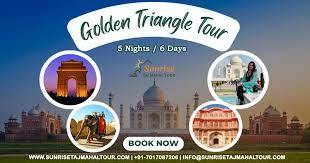
Taking a tour of India's Golden Triangle with Wow Tour Guide Company is more than just a vacation; it's an investigation into the country's fascinating past and magnificent present. The goal of this extensive 6-day journey is to acquaint visitors to the many facets of Indian culture, history, and natural beauty that Delhi, Agra, and Jaipur represent.
The Golden Triangle's Fundamentals
A perfect fusion of India's varied past, the Golden Triangle is a treasure trove of architectural wonders, historical sites, and vibrant cultures.
Why Choose the Amazing Tour Guide Company?
Selecting Wow Tour Guide Company is making the decision to have an authentic, cozy, and in-depth experience. Traveling across India's golden triangle will leave you with amazing memories thanks to knowledgeable guides and well thought-out itineraries.
Day 1 and Day 2: Delhi, the Vivacious Capital
Uncovering the Soul of Ancient Delhi
Start your journey in the Old Delhi alleyways, where the sounds of bustling markets and the aroma of spices fill the air. See the magnificent Jama Masjid, ride a rickshaw to the Red Fort, and visit the serene Raj Ghat to cap off your day.
Discovering the Architectural Wonders of New Delhi
On day two, you explore the broad boulevards of New Delhi, which are dotted with opulent government structures. In addition to being architectural marvels, the President's House, the Lotus Temple, and the India Gate are representations of India's rich cultural diversity.
Days 3 and 4: Agra, The Mughal Marvel
The Taj Mahal at sunrise
A trip to Agra wouldn't be complete without taking in the Taj Mahal's breathtaking morning views. This monument to love is a sight to behold, in all its peaceful and solemn splendor.
The Fort in Agra and Beyond
Explore the vast Agra Fort in the afternoon, and consider visiting the adjacent ghost town of Fatehpur Sikri, where there is a tale to be found around every corner.
Days 5 and 6: Jaipur, the Pink City
The Royal Palaces and Forts
Jaipur beckons with its magnificent palaces and forts. Rajput rulers' magnificence is on display at the City Palace, the observatory Jantar Mantar, and the Amber Fort.
Shopping and Cultural Immersion
A comprehensive exploration of Jaipur's diverse cultural landscape marks the end of your tour. Savor authentic Rajasthani food, observe craftsmen at work, and maybe go shopping for mementos to bring a little piece of India home with you.
In conclusion, the Golden Triangle of India was an unforgettable trip.
Experience India's spirit with this 6-day Golden Triangle tour, designed by Wow Tour Guide Company. It's a historical voyage that takes you to see how empires have changed, how civilizations have merged, and how India's soul has endured.
Making Adventure Reservations with Wow Tour Guide Company
Are you prepared to go out on this amazing journey? To schedule your tour, go to the Wow Tour Guide Company's website or contact their customer service department. There's adventure ahead!
FAQs
Which season is ideal for visiting the Golden Triangle Tour? The best period for this tour is from October to March, when the weather is good from autumn to spring.
Is this a kid-friendly tour? Of course! The tour is made to be fun for guests of all ages, and there are several attractions for younger visitors.
What attire is appropriate for the tour? It is advised to dress modestly and comfortably for India's warm temperature. Remember to bring along your cozy walking shoes!
How can my Golden Triangle tour be personalized? The itineraries offered by Wow Tour Guide Company are customisable. They may customize the tour to your needs, whether you'd want more free time or to see particular locations.
Are the tours included with meals? Specifics differ, however breakfast is usually included in packages. It is recommended to speak with Wow Tour Guide Company directly for the complete specifics regarding meal includes.
Set out on a voyage that guarantees not only vistas but also experiences and discoveries. Prepare for an experience that embodies India when you reserve your Golden Triangle tour with Wow Tour Guide Company.
Day 1: Welcome to Delhi
Upon arriving in Delhi, our friendly team ensures a seamless transfer to your comfortable hotel. Take a moment to settle in and feel the warm ambiance, preparing for the exciting experiences that await you.
Day 2: Delhi Exploration
Explore Delhi's rich history with visits to Qutub Minar and UNESCO-listed Humayun's Tomb. Pay homage at India Gate, a war memorial, and marvel at the modern architectural gem, the Lotus Temple. Return to your cozy hotel for a peaceful night's sleep, reflecting on the day's cultural tapestry.
Day 3: Delhi to Agra
Bid farewell to Delhi and venture towards Agra, the city of the Taj Mahal. Our guide ensures you witness the awe-inspiring Taj Mahal, a marble marvel and an enduring symbol of love. Explore the historic Agra Fort, a majestic red sandstone fortress offering panoramic views of the Taj Mahal. Optionally, indulge in the tranquility of Mehtab Bagh as the sun sets, casting a magical glow over the Taj Mahal. Relax and unwind at your chosen accommodation in Agra.
Day 4: Agra Relaxation and Journey to Jaipur
Take a leisurely morning in Agra, perhaps revisiting the Taj Mahal to appreciate its beauty in a different light. In the afternoon, embark on the journey to Jaipur, exploring the UNESCO-listed Fatehpur Sikri and the ancient Abhaneri Stepwell en route. Upon reaching Jaipur, our guide assists you in settling into your comfortable hotel.
Day 5: Jaipur Exploration
Discover the grandeur of Jaipur starting with the majestic Amber Fort, perched on a hill with optional elephant rides. Capture Jaipur's essence at Jal Mahal, marvel at Hawa Mahal's unique architecture, and delve into the opulence of the City Palace. Conclude with local market shopping, guided by our team for an enriching experience, creating lasting memories of the Pink City.
Day 6: Jaipur to Delhi and Departure
Commence your final day with a visit to Nahargarh Fort, offering panoramic views of the surrounding landscape. Bid farewell to Jaipur and head back to Delhi, where our team ensures a smooth transfer to the airport or train station, concluding journey filled with unforgettable experiences. Safe travels!
0 notes
Text
The McQuinn Strip Boundary Dispute
By Steve Lent, Crook County Historian The Indian Tribes of Middle Oregon signed a treaty with the United States in 1855. The Indians gave up their right to ancestral lands and retained only that part which became known as the Warm Springs Indian Reservation. They were reluctant to give up these lands but were told that it was the only way they could protect their land from the rush of settlers. A…

View On WordPress
0 notes